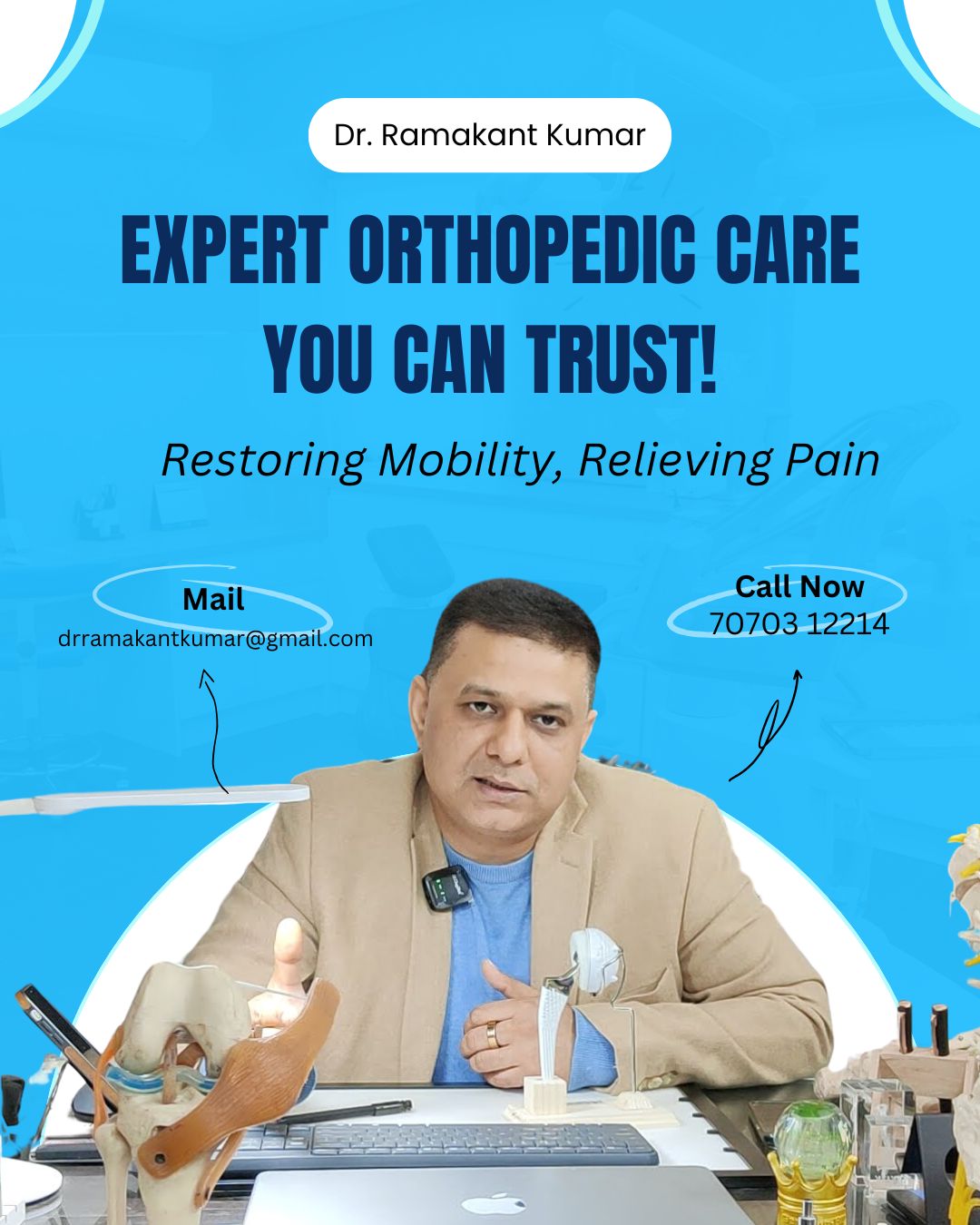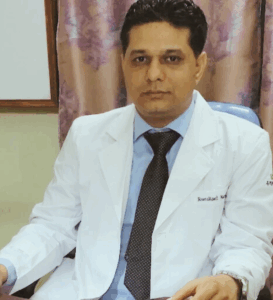Total Hip Arthroplasty, or surgical replacement of the hip joint with an artificial prosthesis, is a reconstructive procedure that helps to improve the management of those diseases of the hip joint that have responded poorly to conventional medical therapy.
In this blog, we will briefly summarize the evolution of Total Hip Arthroplasty, the design, and the development of prosthetic hip components, along with the current clinical indications for this procedure. The possible complications of total hip arthroplasty, its clinical performance over time, and future directions in hip replacement surgery are also discussed.
Contents
Total Hip Arthroplasty Definition:
Total Hip Arthroplasty also called Hip Replacement is the removal and replacement of portions of the pelvis and femur (thighbone) that form your hip joint. It is performed primarily to relieve hip pain and stiffness caused by hip arthritis.
This procedure is also sometimes used to treat injuries such as a broken or improperly growing hip, and for other conditions.
How Do You Know If You Need A Hip Arthroplasty?
If you have these arthritis symptoms, you should consider a hip replacement:
- severe hip pain that is not relieved by medication and that interferes with your work, sleep or everyday activity
- hip stiffness that restricts motion and makes it difficult to walk
- If you have osteoarthritis and that is wearing you down physically, emotionally, and mentally.
- No relief from non-surgical treatment methods
- If you had a severe injury to your hips
Thus, if you are experiencing any of the above-mentioned conditions, then you must refer to considering an Arthroplasty surgeon. However, if looking for a Top Arthroplasty Doctor in Patna, it makes sense to choose Dr. Ramakant Kumar, over other medical institutions. (to know why to refer to the last section of this blog)
Procedure for Hip Replacement Surgery
The surgeon might give you a nerve block by injecting anesthesia around the nerves or in and around the joint to help block pain after the surgery. The surgical procedure generally takes someone to two hours to get complete.
To perform the hip replacement surgery, the surgeon first makes an incision over the front or side of the hip, through the layers of the tissue. He then removes the diseased and damaged bone or cartilage, leaving the healthy bone intact. And then replaces it with an artificial joint made of metal or plastic to restore the alignment and function of your hip.
Risks of the Procedure
The complication rate following Total Hip Arthroplasty is very low. Serious complications, such as joint infection, occur in less than 2% of patients. Yet, as with any other major surgical procedure, patients who undergo total joint replacement are at high risk for certain complications, many of which can be successfully avoided and/or treated.
Blood clots
Blood Clots are the most common complication after surgery. Your orthopedic surgeon may prescribe measures to prevent a clot from forming in the veins in your leg veins. These measures may include a special support hose, inflatable leg coverings, and blood thinners.
Fracture
It is possible that the healthy parts of the hip will fracture during surgery. Smaller fractures should heal on their own, but larger fractures may require the use of wires, pins, or possibly bone grafts to correct them.
Dislocation
Because certain positions may cause the ball of your new joint to extricate, it is recommended that you don’t bend more than 90 degrees at the hip and don’t let your legs cross the midline of your body. If a dislocation occurs, a second surgery may need to be performed to stabilize it.
Change in Leg Length
Although the surgeon will do all that they can to avoid this, sometimes muscle weakness around the hip can cause the leg with the new hip to shorten or lengthen.
Loosening
This is rare, but if over time the new joint does not become fixed to your bone or loosens over time, surgery may need to be done in order to fix the problem.
Recovery from Total Hip Arthroplasty
Immediately after the surgery, doctors keep the patient in the recovery room for an hour. Once the vitals are stable, doctors shift patients to a normal ward. From the next day, doctors allow the patients to sit. Also, standing & walking with the help of a walker as per pain tolerance is encouraged from the next day of surgery.
As a result, it takes approximately six to 8 weeks to walk independently without support. Moreover, you can read the detailed recovery process on Total Hip Replacement Pdf or Total Hip Arthroplasty Ppt online.
Total Hip Arthroplasty Precautions
Patients should take the following precautions post-Hip Arthroplasty Surgery:
- Do not cross your legs when you are sitting, standing, or lying down.
- Sit in a firm chair with a straight back and armrests.
- Avoid chairs that are too low. Your hips should be higher than your knees when you are sitting.
- Avoid soft chairs, rocking chairs, stools, or sofas.
- Try not to sit in the same position for more than 30 to 40 minutes at a time.
- Lie on your back while resting in bed. Keep a pillow between your thighs to prevent your knees from touching.
- Do not drive until your doctor says you may.
- While bathing or showering, do not sit at the bottom of a regular bathtub. One may stand in the shower if they like.
Moreover, your surgeon will also recommend a set of exercises and physical therapy to perform to gain your hip motion as soon as possible. For this, you can either take help from your physical therapist or you can watch some Total Hip Replacement Video, Total Hip Replacement Guidelines, and Total Hip Arthroplasty Physiopedia online.
Dr. Ramakant Kumar | Top Arthroplasty Doctor in Patna
Dr. Ramakant Kumar is an experienced Orthopedic Doctor in Boring Canal Road, Patna. He has been a successful Orthopedic Doctor for the last 14 years. He has completed MBBS, MS – Orthopaedics, DNB – Orthopedics and is currently practicing at Advance Bone and Joint Clinic in Boring Canal Road, Patna.
Dr. Ramakant Kumar, the Best Orthopaedic Surgeon Patna, Bihar, has developed an enviable reputation as a Hip/ Knee Joint Replacement surgeon as well as an Arthroscopic Shoulder Surgeon Patna. He has successfully performed numerous cases of Hip & Knee Arthroplasty including revision surgeries.
Being one of the finest Patna Orthopaedic Doctors, he has successfully introduced and integrated newer advances. This includes the usage of allografts in revision arthroplasty. Moreover, Navigation Technology in Total Knee & Total Hip Replacement and UKR.
His clinic’s quality ratings are excellent amongst the other Popular Orthopaedic Hospital Patna. In addition to that his exceptionally low rate of complications and high patient satisfaction scores has renowned him the Best Orthopaedic Surgeon Patna.
Therefore, if anyone is looking for the best Total Hip Arthroplasty in Patna Bihar, then they must go for Ramakant Kumar.
So, here finally ends up all about Total Hip Arthroplasty.
Hopefully, you find the blog helpful for you & came to know why Dr. Ramakant Kumar is the best Total Hip Arthroplasty.




